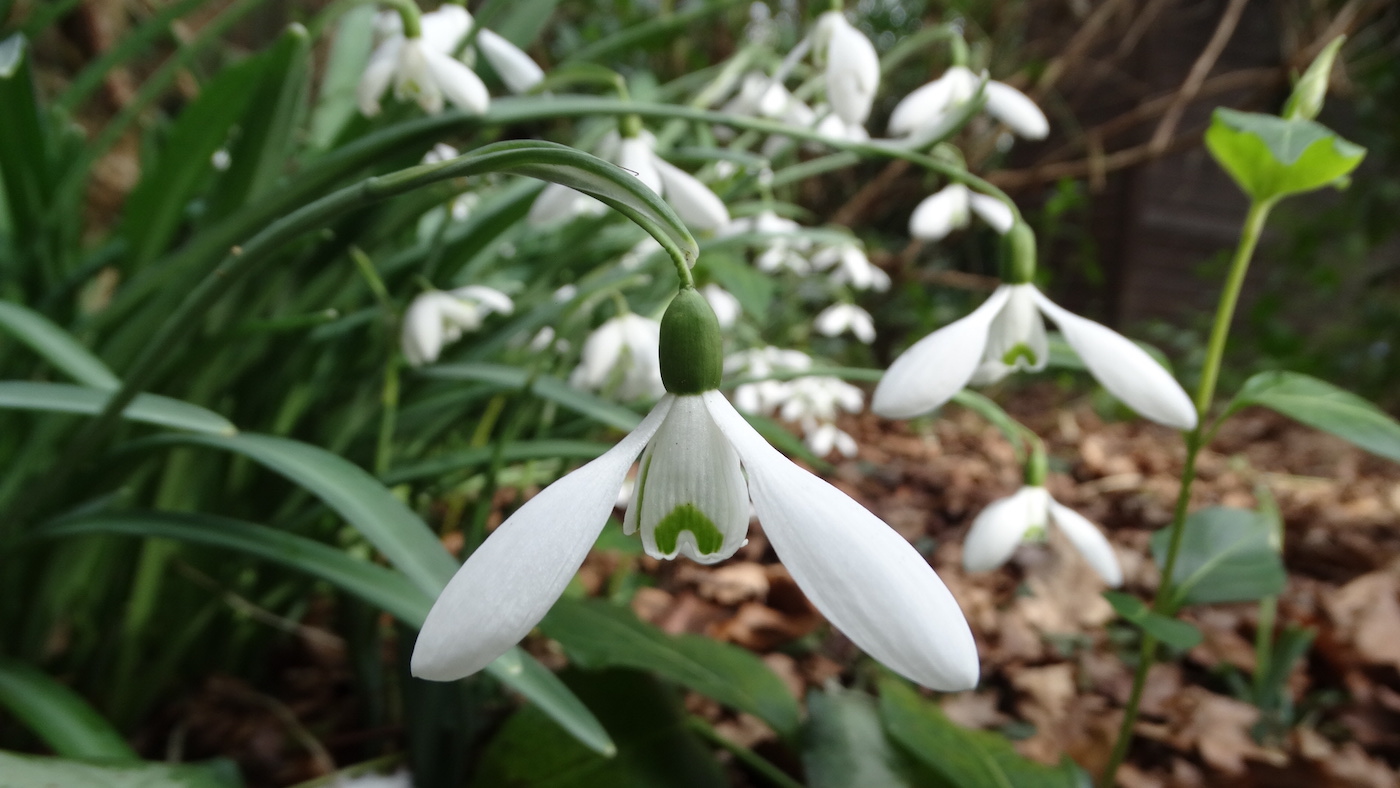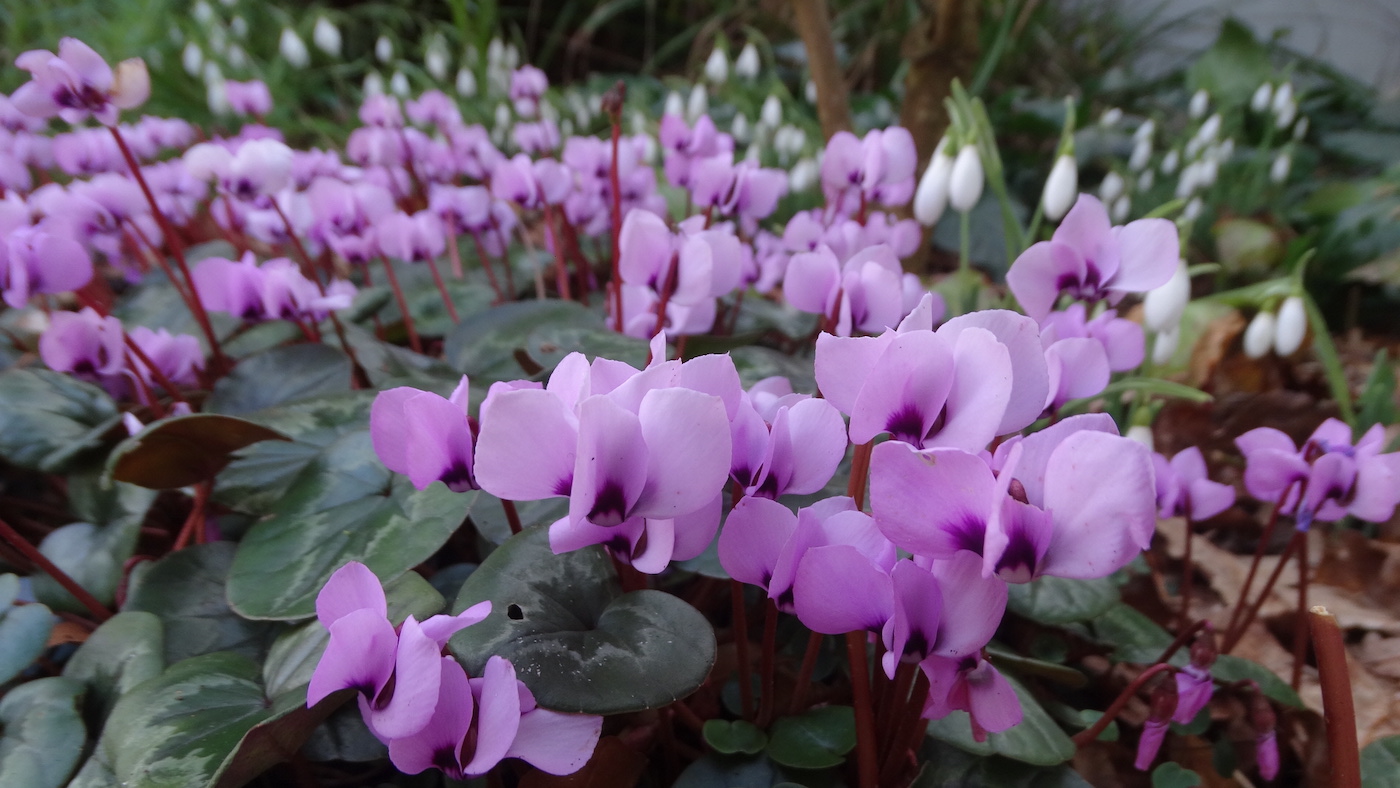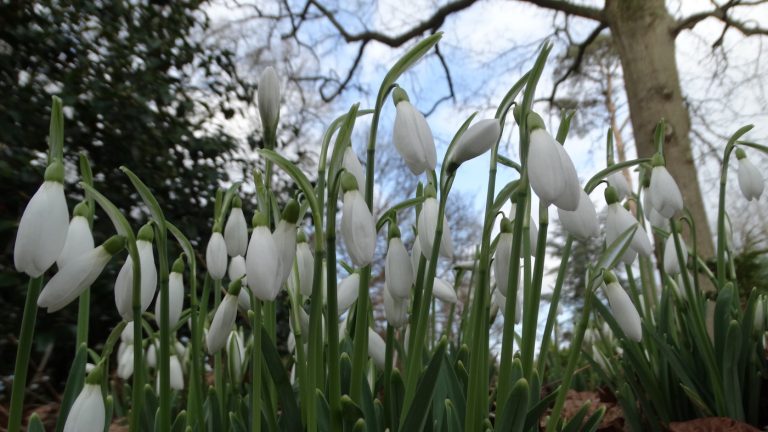Whether it’s the audacity of such delicate, white flowers to emerge at this time of year, or the fact they are the first of the spring bulbs to emerge and promise the end of winter, discovering the first snowdrop never fails to surprise and lift the spirits.
Here at the Cotswold Wildlife Park in Oxfordshire we enjoy drifts of Galanthus nivalis naturalised in several meadows around the Park. There is also a collection of approximately 30 varieties displayed in the Winter Garden and adjacent woodland setting of the owl enclosures.
First to make an appearance is Galanthus ‘Faringdon Double’ with its wide, glaucous leaves – recorded as early as 27th November. The display evolves with G. ‘Colossus’, a large-flowering variety and continues until late February with the silver-leaved G. ‘Marjorie Brown’, double G. ‘Hill Poe’ and convolute G.’ David Shackleton’ – each variety offering something a little different and all requiring closer observation! Minute differences, such as unusual markings of green or yellow on the inner segments, coloured tips on the tepals, or yellow ovaries are what inspire the passion for visiting winter gardens and planting these seasonal gems.
The snowdrop collection at the Wildlife Park was started by Tim Miles, previous head gardener and expanded  with gifts from generous gardening friends and snowdrop experts. .A complimentary backdrop to the early snowdrops and Cyclamen are winter-flowering shrubs – Hamamelis (witch hazel), Sarcococca (Christmas Box), Daphne and Viburnum, plus the coloured stems of Cornus, and Edgeworthia, buds poised to open. A multitude of hellebores and Eranthus (Winter Aconite) are also planted throughout the beds to enhance and continue the winter display.
with gifts from generous gardening friends and snowdrop experts. .A complimentary backdrop to the early snowdrops and Cyclamen are winter-flowering shrubs – Hamamelis (witch hazel), Sarcococca (Christmas Box), Daphne and Viburnum, plus the coloured stems of Cornus, and Edgeworthia, buds poised to open. A multitude of hellebores and Eranthus (Winter Aconite) are also planted throughout the beds to enhance and continue the winter display.


